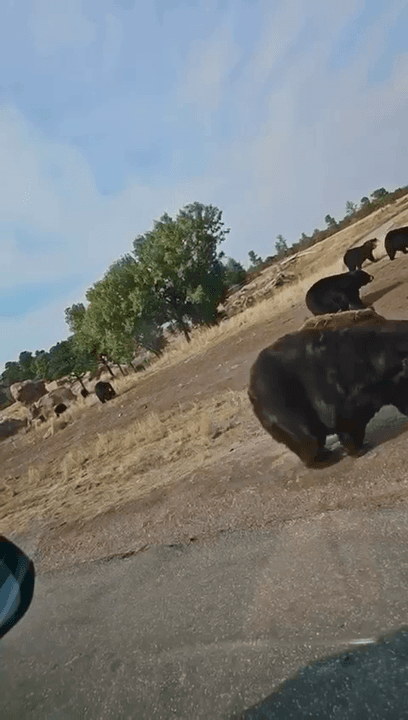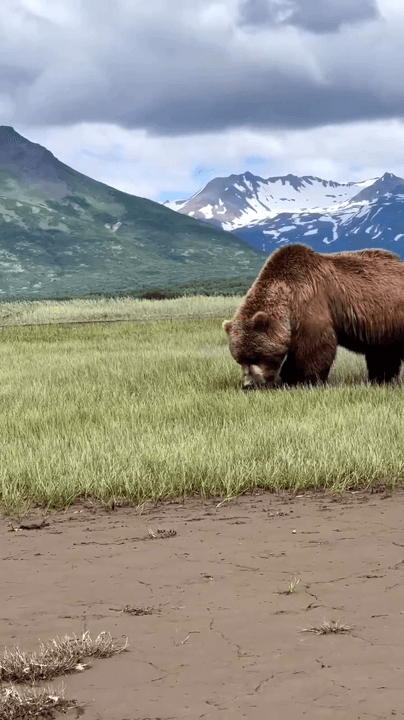beams - All
Yes, black bears (Ursus americanus ) and brown bears (Ursus arctos ), which include grizzly bears in North America, can live together in the same regions in Canada. Typically black and brown bears occupy different habitats and have distinct behaviors that reduce direct competition between them. This coexistence is possible due to differences in their ecological niches, dietary preferences, and habitat use.
Key Points About Black and Brown Bears Coexisting in Canada:
1. Geographic Distribution
Black Bears : These are much more widespread across Canada and can be found in forests from coast to coast, including areas with dense human populations.
Brown Bears (Grizzlies) : They are primarily found in western Canada, particularly in British Columbia, Alberta, Yukon, and the Northwest Territories. Grizzlies tend to inhabit more remote, rugged, and less populated areas, such as mountains, tundra, and coastal regions.
2. Habitat Preferences
Black Bears : Prefer forested areas, swamps, and woodlands. They are highly adaptable and can thrive in a variety of environments, including suburban areas.
Brown Bears : Favor open landscapes, alpine meadows, and river valleys, especially near salmon spawning streams. Coastal brown bears also rely heavily on marine resources like fish.
3. Dietary Differences
Both species are omnivores, but their diets differ slightly based on habitat:
Black Bears : Eat berries, nuts, insects, small mammals, carrion, and vegetation. They are less reliant on large prey or fish compared to brown bears.
Brown Bears : Have a more varied diet, including large ungulates (e.g., elk, moose), fish (especially salmon during spawning season), roots, berries, and grasses. Their stronger jaw structure allows them to crush bones and consume tougher foods.
4. Behavioral Differences
Black Bears are generally smaller, more agile climbers, and less aggressive than brown bears. They often climb trees to escape danger or feed on fruits and nuts.
Brown Bears are larger, slower climbers, and more likely to defend territory or food sources aggressively. Grizzlies, in particular, are known for their territorial behavior around prime feeding areas like salmon streams.
5. Coexistence Mechanisms
• Spatial Separation : Black and brown bears often avoid each other by using different parts of the landscape. For example, black bears may stick to forested areas while brown bears dominate open spaces. Temporal Separation : In some cases, the two species may use the same resources at different times, reducing direct competition.
• Dominance Hierarchies : When encounters occur, brown bears usually dominate due to their larger size and strength. Black bears will typically retreat rather than engage in conflict.
6. Hybridization
While rare, there have been documented cases of hybridization between black and brown bears, producing offspring colloquially called "pizzly" or "grolar" bears. However, this is uncommon in the wild and occurs under specific circumstances where natural barriers to mating are reduced.
Black and brown bears can coexist in Canada because of their differing ecological roles, habitat preferences, and behavioral adaptations. While they occasionally interact, these interactions are usually limited by spatial and temporal separation, as well as the dominance of brown bears in shared territories. This balance allows both species to thrive in their respective niches within Canada's diverse ecosystems.
Alaska's Majestic Bears: A Guide to Understanding These Iconic Giants
Discover Alaska's diverse bear population, including grizzlies, black bears, and polar bears. Learn about their habitats, behavior, safety tips, and how to observe them responsibly.
Alaska, the Last Frontier, is renowned for its breathtaking landscapes, abundant wildlife, and, most notably, its impressive bear population. These magnificent creatures hold a significant place in Alaska's ecosystem and cultural heritage. From the formidable grizzly to the adaptable black bear and the Arctic-dwelling polar bear, Alaska offers a unique opportunity to witness these iconic animals in their natural habitat. This article delves into the world of Alaskan bears, providing insights into their characteristics, behavior, and how to safely and responsibly appreciate their presence.
Types of Bears in Alaska:
Alaska is home to three main types of bears:
Grizzly Bear (Brown Bear): Often referred to as brown bears, grizzlies are the largest and most powerful land predators in Alaska. They are characterized by their prominent shoulder hump (a mass of muscle for digging), long claws, and dish-shaped face. Coastal brown bears, thriving on salmon runs, can grow to immense sizes. Grizzlies are omnivorous, with a diet that includes berries, roots, insects, fish, and mammals. They are most active during the day (diurnal) but can adjust their behavior to avoid human contact.
Black Bear: The most common bear species in Alaska, black bears are found in forested areas throughout the state. Despite their name, their fur can range in color from black to brown, cinnamon, or even blonde. They are generally smaller than grizzlies and lack the distinctive shoulder hump. Black bears are opportunistic feeders, consuming a wide variety of plants, fruits, insects, and small animals.
Polar Bear: Found primarily in the Arctic regions of Alaska, polar bears are highly specialized for life in the icy environment. They have thick fur, a layer of blubber for insulation, and large paws for navigating snow and ice. Polar bears are primarily carnivores, relying heavily on seals for sustenance. Climate change and the loss of sea ice are significant threats to their survival.
Bear Habitat and Distribution:
Grizzly Bears: Found throughout Alaska, with higher densities in areas with abundant food sources like salmon streams and berry patches.
Black Bears: Found in forested areas across Alaska, excluding some areas of the Arctic.
Polar Bears: Found along the Arctic coast of Alaska, primarily near sea ice.
Bear Behavior and Ecology:
Understanding bear behavior is crucial for both appreciating these animals and ensuring your safety. Here are some key aspects:
Hibernation: During the winter months, bears enter a state of dormancy to conserve energy. They reduce their metabolic rate, heart rate, and breathing. While not true hibernation, this period allows them to survive when food is scarce.
Diet: Bears are opportunistic omnivores. Their diet varies depending on the season and availability of food.
Social Structure: Bears are generally solitary animals, except for mothers with cubs.
Communication: Bears communicate through scent marking, body language, and vocalizations.
Bear Safety Tips:
Alaska is bear country, and taking precautions is essential when exploring the outdoors. Here are some important safety tips:
Make Noise: Hike in groups and make noise to alert bears to your presence. Singing, talking loudly, or using bear bells can help.
Carry Bear Spray: Bear spray is a highly effective deterrent against aggressive bears. Know how to use it properly and keep it readily accessible.
Store Food Properly: Store food in airtight containers and hang it between trees, at least 10 feet off the ground and 4 feet from the trunk.
Avoid Attracting Bears: Do not leave food scraps or garbage behind.
Be Aware of Your Surroundings: Pay attention to signs of bear activity, such as tracks, scat, and claw marks on trees.
Never Approach a Bear: If you encounter a bear, remain calm, slowly back away, and avoid direct eye contact.
Responsible Bear Viewing:
Seeing a bear in its natural habitat can be an unforgettable experience. Here are some guidelines for responsible bear viewing:
Maintain a Safe Distance: Observe bears from a safe distance using binoculars or a spotting scope.
Do Not Feed Bears: Feeding bears is illegal and can habituate them to humans, leading to dangerous encounters.
Respect Their Space: Avoid approaching bears, especially mothers with cubs.
Support Sustainable Tourism: Choose tour operators that prioritize bear conservation and responsible wildlife viewing practices.
Conservation Efforts:
Protecting Alaska's bear population is crucial for maintaining the health of the ecosystem. Various organizations and agencies are involved in bear research, habitat conservation, and public education. These efforts help ensure that future generations can appreciate these magnificent animals.
Conclusion:
Alaska's bears are a symbol of the state's wild beauty and untamed spirit. By understanding their behavior, respecting their habitat, and following safety guidelines, we can coexist with these incredible creatures and ensure their continued survival in the Last Frontier. Plan your visit responsibly, be prepared, and marvel at the majestic bears of Alaska.
#Alaska #Bears #Grizzly #Bear #BrownBear, #BlackBear


